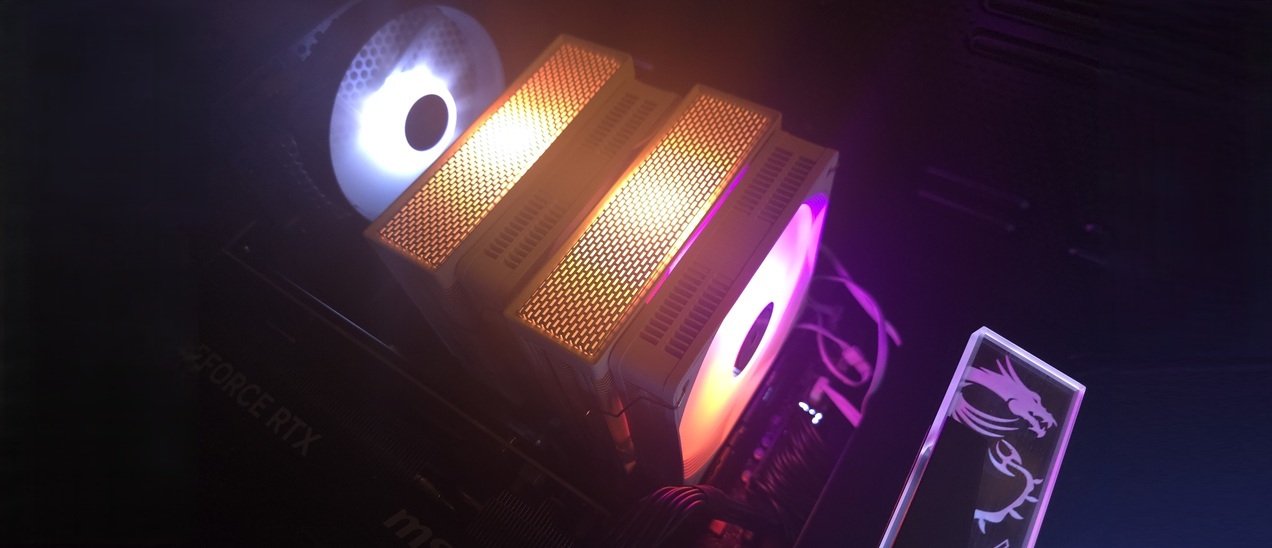Tom's Hardware Verdict
Jiushark’s JF800 Diamond is the strongest performing air cooler we’ve ever tested, but it’s not easy to get in the U.S.
Pros
- +
Strongest air cooler we’ve tested
- +
Chart-topping noise-normalized performance
- +
Nice aesthetics
Cons
- -
You’ll probably have to import this one via AliExpress
- -
Runs louder than competing coolers
Why you can trust Tom's Hardware
While Jiushark isn’t well known in U.S. enthusiast and PC building circles, we’ve covered the company in the past, highlighting some of its unique products like the Jiushark M.2 Three, an M.2 SSD cooler that uses a dual heatpipe radiator and fan, much like a mini CPU cooler. We’ve also tested the JF13K Diamond low-profile CPU cooler.
Today, we’re looking at the new Jiushark JF800 Diamond dual-tower air cooler, available in white and black, with the company claiming cooling capabilities of up to 280W!
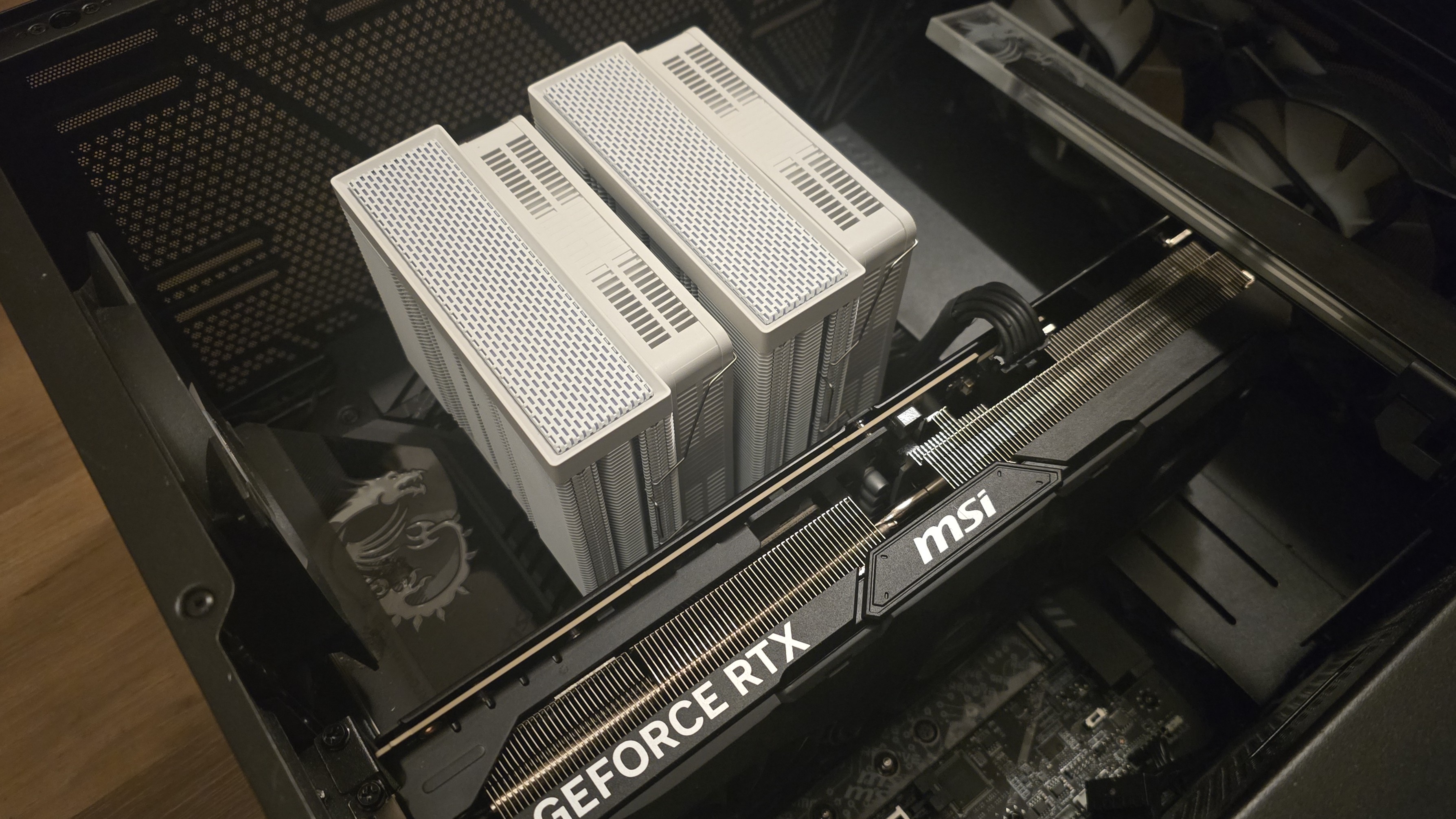
Will Jiushark’s latest make our list of best CPU coolers on the market? There’s no question that it deserves a shot because, spoiler, this is the strongest performing dual-tower cooler we’ve ever tested, on both Intel Raptor Lake and Arrow Lake CPUs. But it’s also pretty hard to come by in the U.S., unless you’re willing to order it directly from China.
Let’s take a look at the specifications and features of the cooler. Then we’ll go over thermal performance and noise levels.
Cooler specifications
Cooler | Jiushark JF800 Diamond ARGB |
MSRP | $43.40 via AliExpress |
Radiator Material | Aluminum |
Lighting | ARGB or non-ARGB fans |
Warranty | 1 Year |
Socket Compatibility | Intel Socket LGA 1851/1700/1200/115x/2011 AMD AM5 / AM4 |
Unit Dimensions (including fans) | 130 (L) x 135.5 (W) x 159mm (D) |
Maximum TDP (Our Testing) | >254W with Core i7-14700K |
Packing and included contents
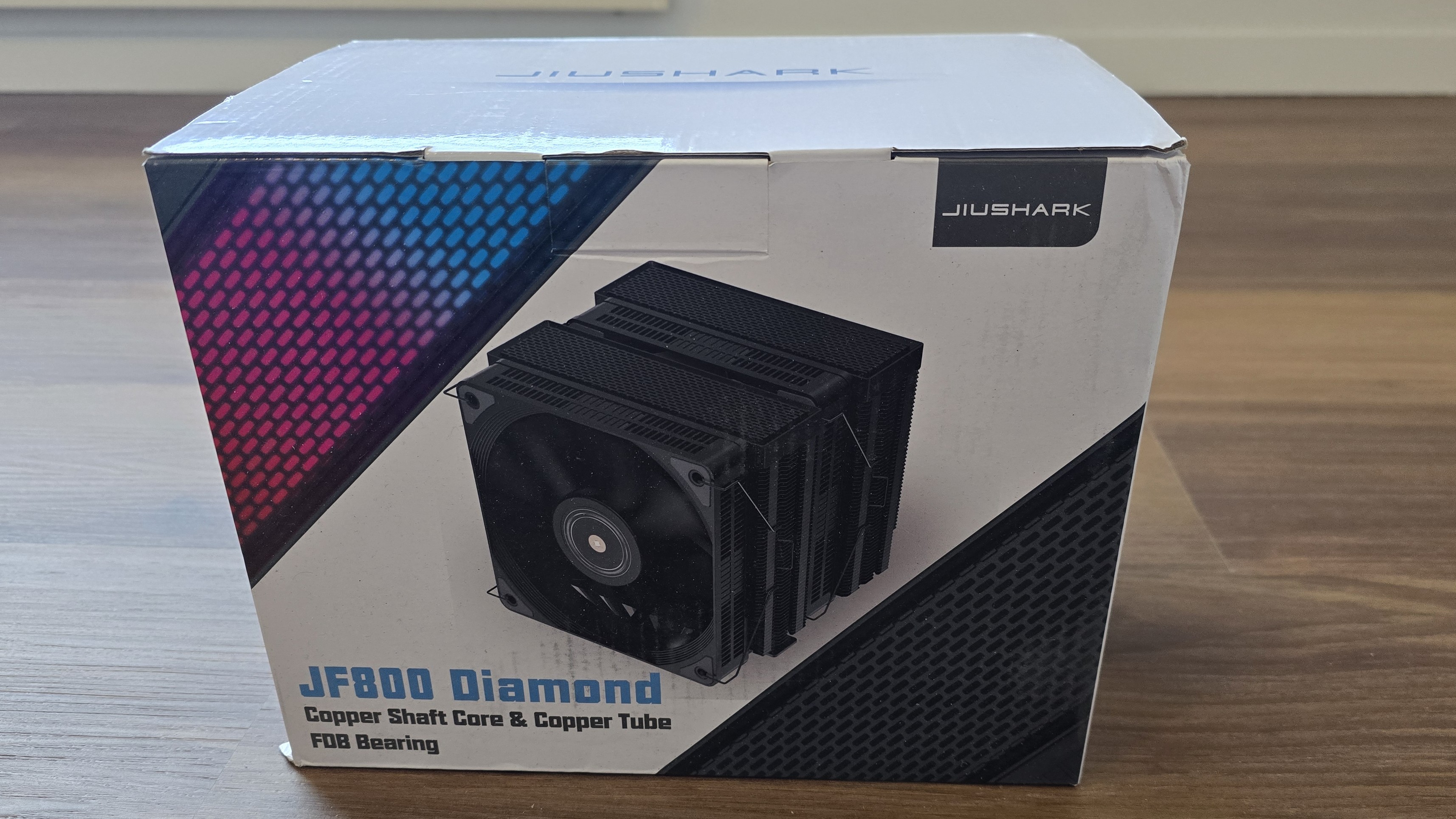
Opening the compact box reveals the accessories, neatly packaged above the cooler.
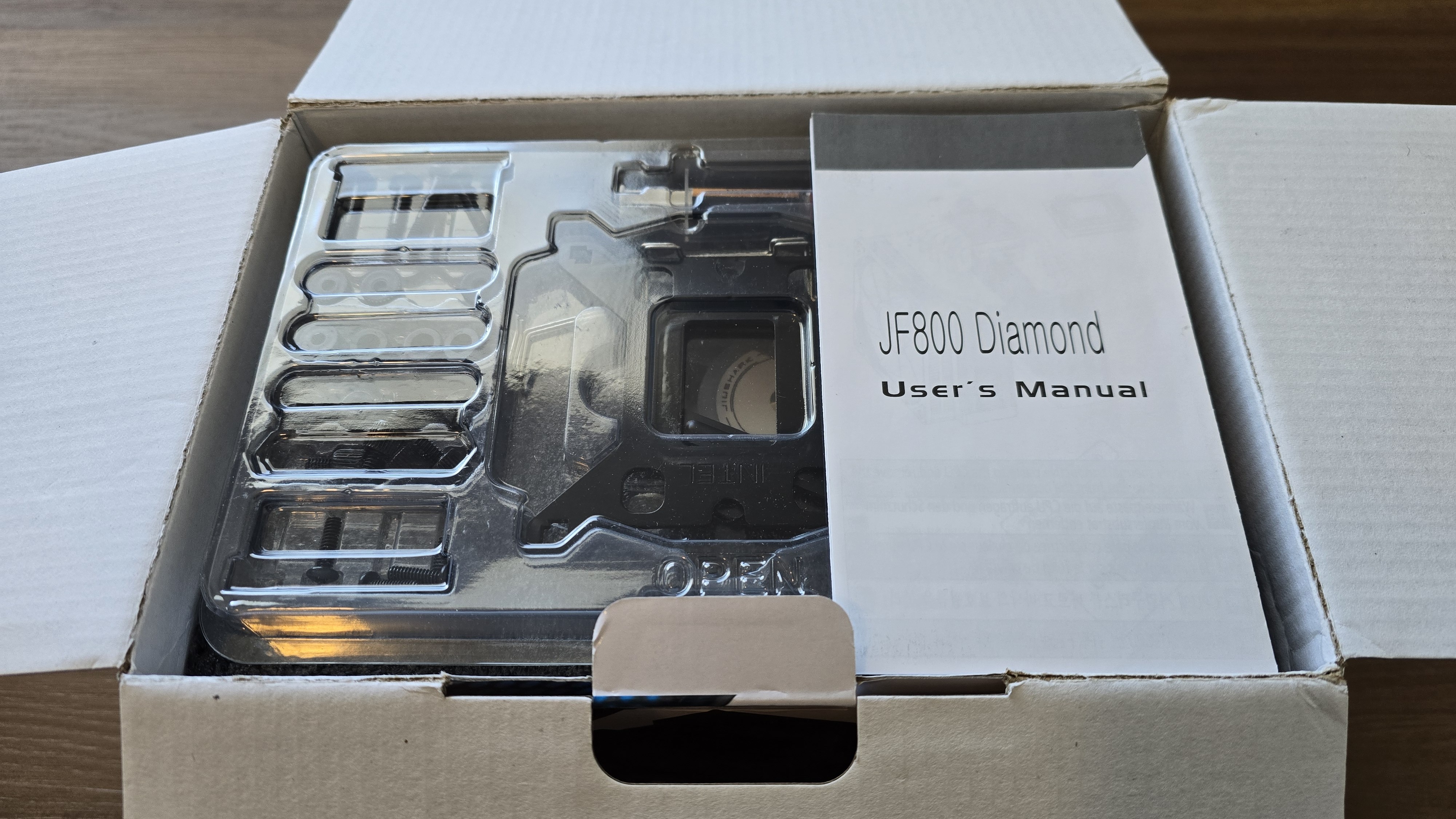
Included in the box are the following:
- Two 120 mm fans
- Dual-tower heatsink
- Thermal paste
- Mounting accessories for modern AMD and Intel platforms
- Installation manual
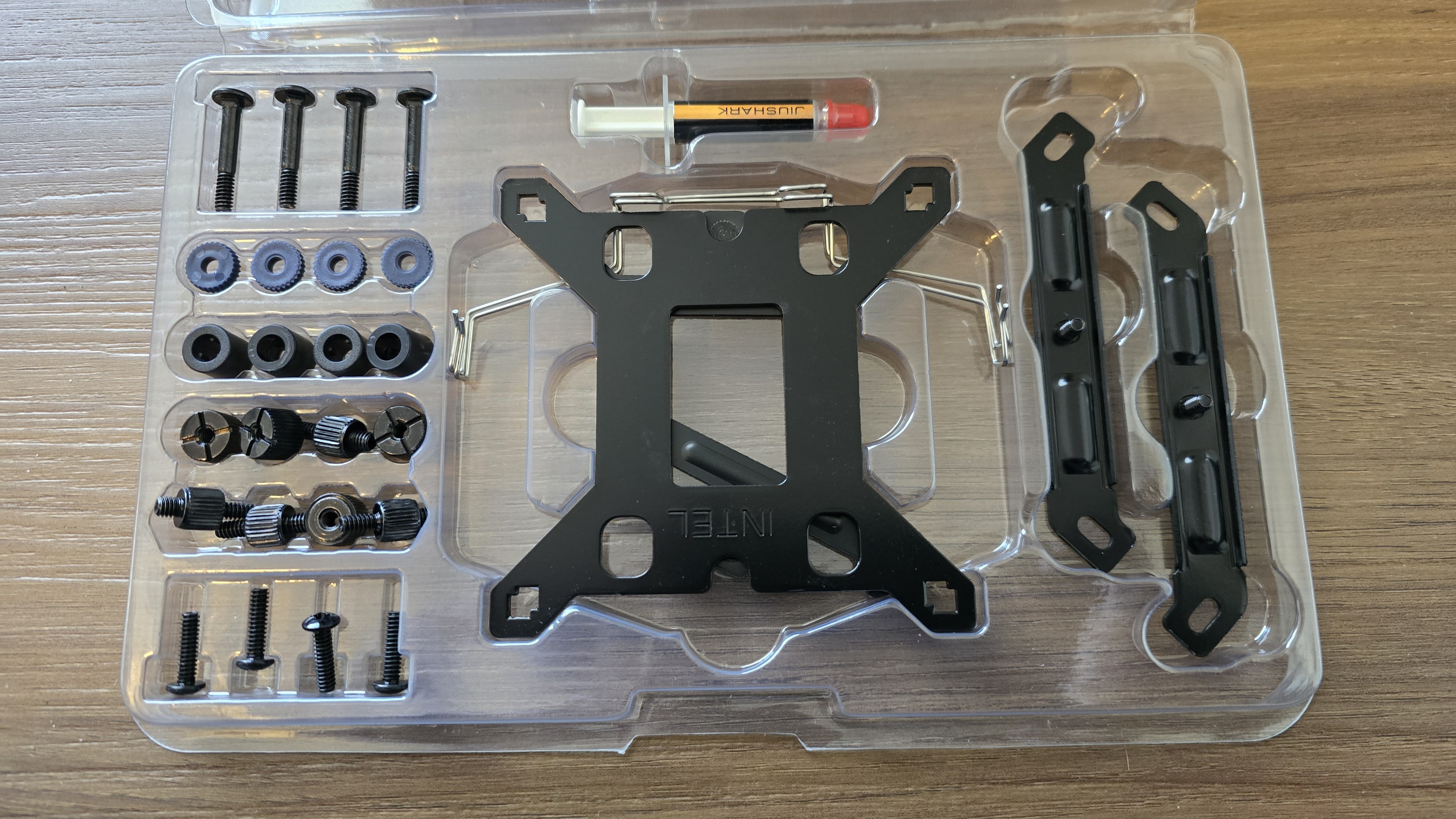
Features of Jiushark’s JF800 Diamond
*️⃣ Six copper heatpipes
Get Tom's Hardware's best news and in-depth reviews, straight to your inbox.
The Jiushark JF800 Diamond moves heat away from the CPU using six copper heatpipes – but as you’ll see in our benchmarks, it offers performance superior to similar air coolers we’ve tested.
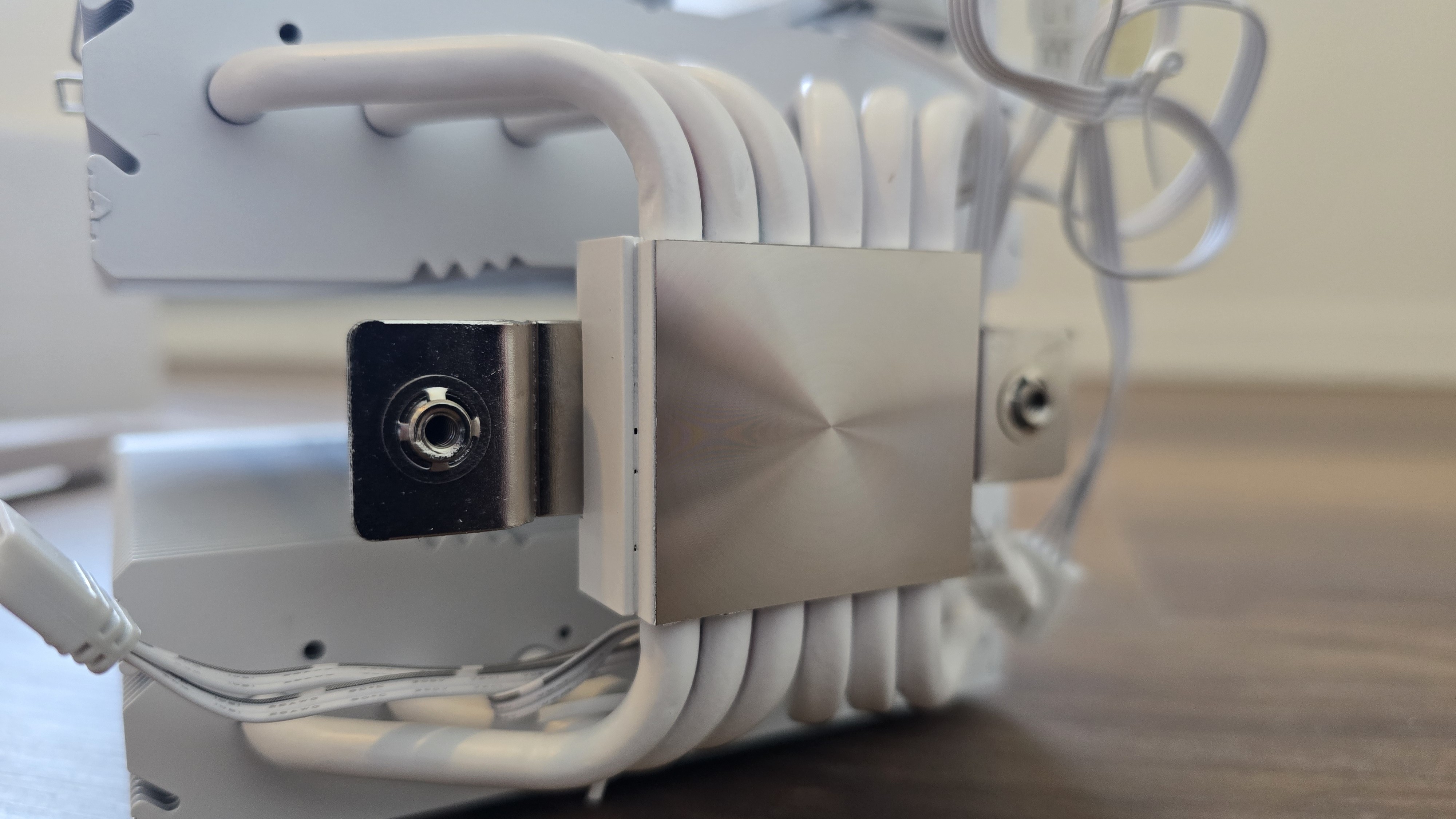
*️⃣ Heatsink Design
The towers of the JF800 feature what appears to be a fairly basic fin design.
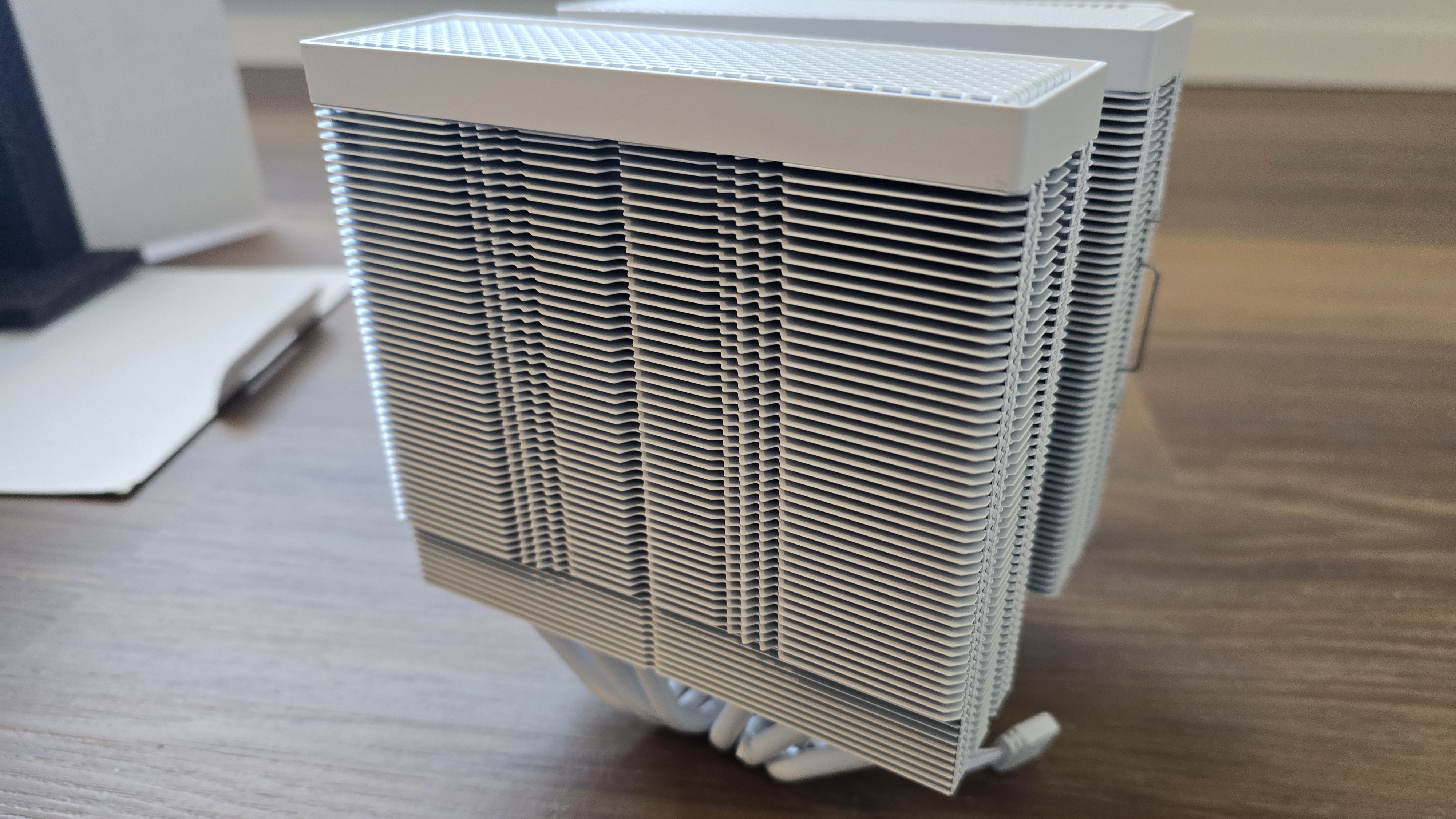
The tops of the heatsinks have a grille reminiscent of cattle guards, adding some nice aesthetics with the ARGB lighting shining through them.
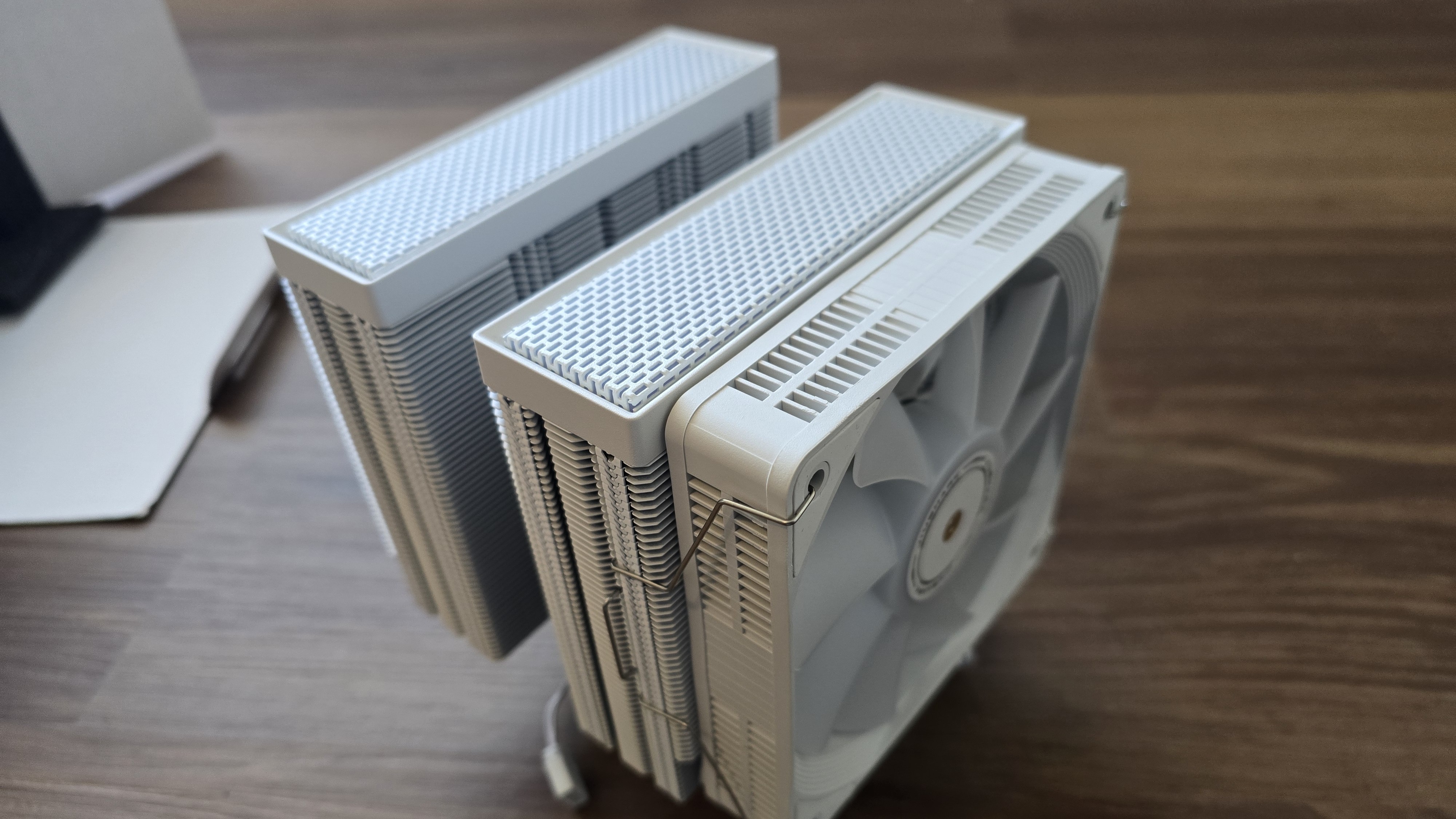
*️⃣ Two 120mm fans with ARGB lighting
There’s more to a cooler than just the heatsink or radiator. The bundled fans significantly impact cooling and noise levels, as well as how the cooler looks in your case. The included fans here have nine blades, and there are models with or without ARGB lighting, according to your preference.
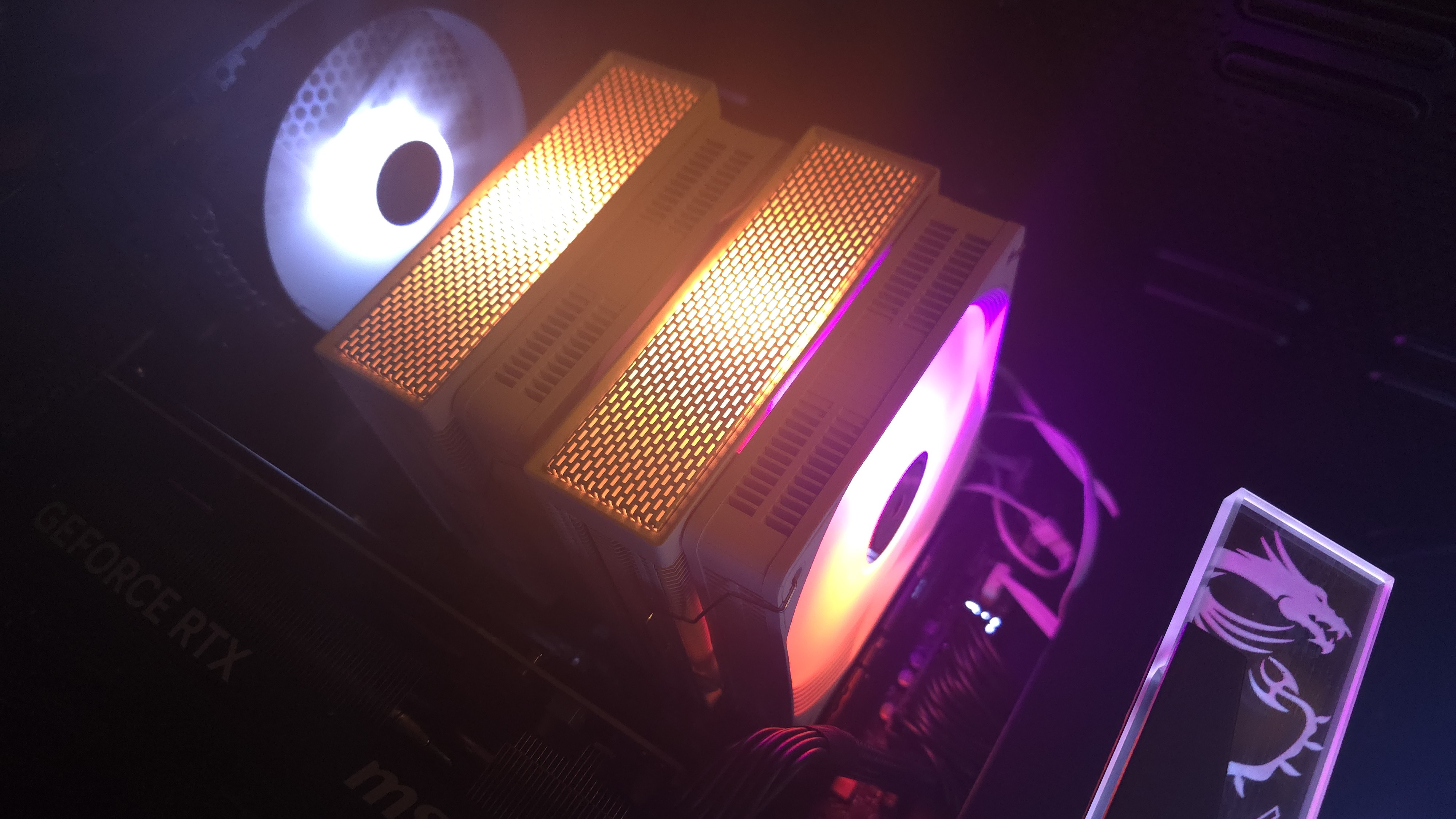
As you’ll see in the benchmarks below, the fans help enable superior thermal performance, but can be a little noisy.
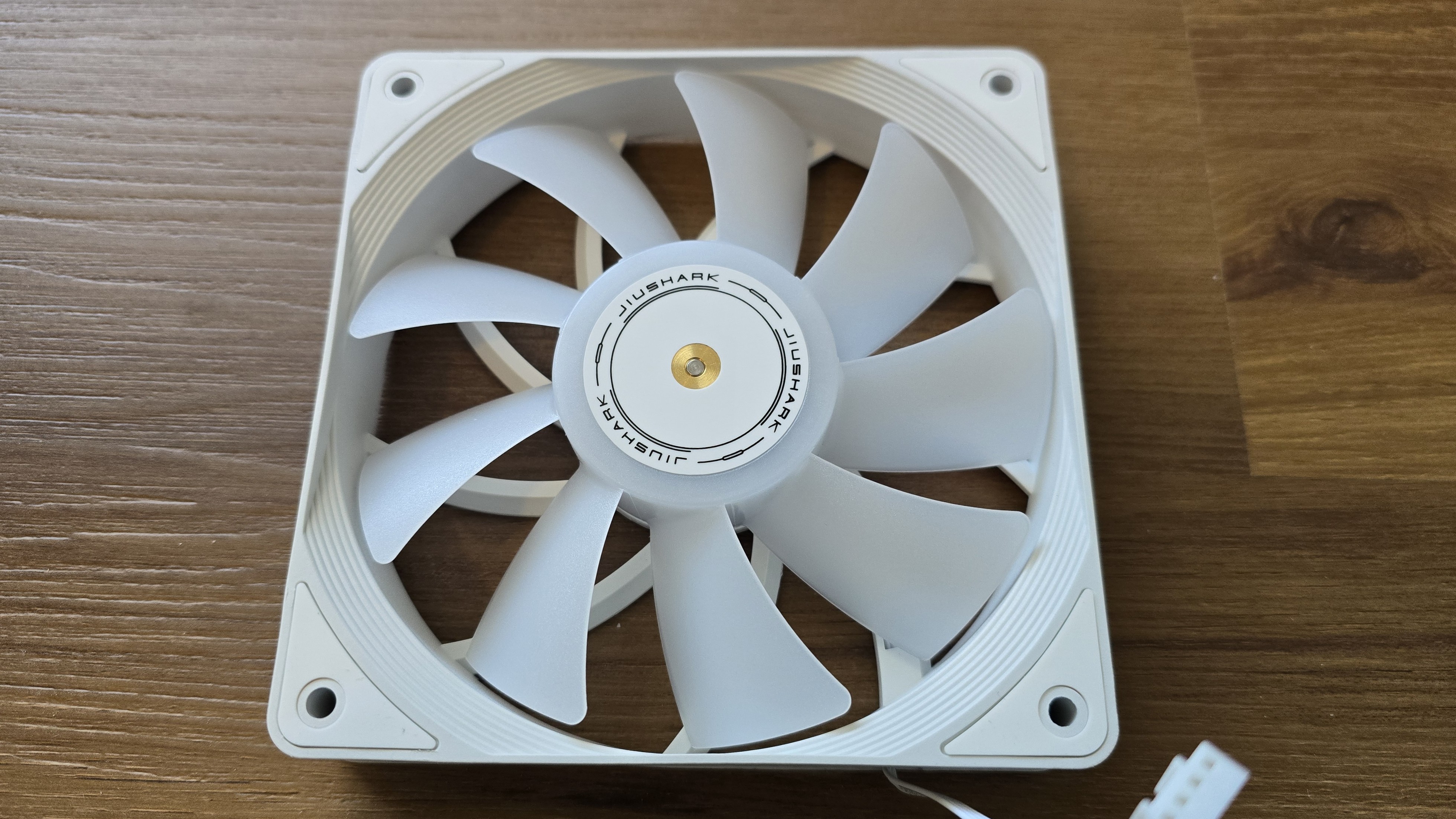
Dimensions | 120 x 120 x 25mm |
Fan Speed | 800-1800 RPM ± 10% |
Air Flow | Up to 83.54 CFM |
Air Pressure | Up to 2.68 mmH2O |
Bearing Type | FDB |
MTTF | Unlisted |
Lighting | Optional ARGB |
Testing configuration – Intel LGA1700 and LGA1851 platform
CPU | Intel Core i7-14700K |
GPU | ASRock Steel Legend Radeon 7900 GRE |
Motherboard | MSI Z790 Project Zero |
Case | MSI Pano 100L PZ Black |
System Fans | Iceberg Thermal IceGale Silent |
There are many factors other than the CPU cooler that can influence your cooling performance, including the case you use and the fans installed in it. A system's motherboard can also influence this, especially if it suffers from bending, which results in poor cooler contact with the CPU.
To prevent bending from impacting our cooling results, we’ve installed Thermalright’s LGA 1700 contact frame into our testing rig. If your motherboard is affected by bending, your thermal results will be worse than those shown below.
Not all motherboards are affected equally by this issue. I tested Raptor Lake CPUs on two motherboards. And while one showed significant thermal improvements after installing Thermalright’s LGA1700 contact frame, the other motherboard showed no temperature diffrence! Check out our review of the contact frame for more information.
I’ve also tested this cooler with Intel’s latest platform, Arrow Lake and the LGA 1851 socket.
CPU | Intel Core Ultra 9 285K |
GPU | MSI Ventus 3X RTX 4070Ti Super |
Motherboard | MSI Z890 Carbon Wifi |
Case | MSI MPG Gungnir 300R |
System fans | Pre-installed case fans |
LGA 1700 and 1851 installation
The installation of this air cooler is easy with the included mounting hardware.
1. You’ll first need to place the backplate against the rear of the motherboard after assembling it.
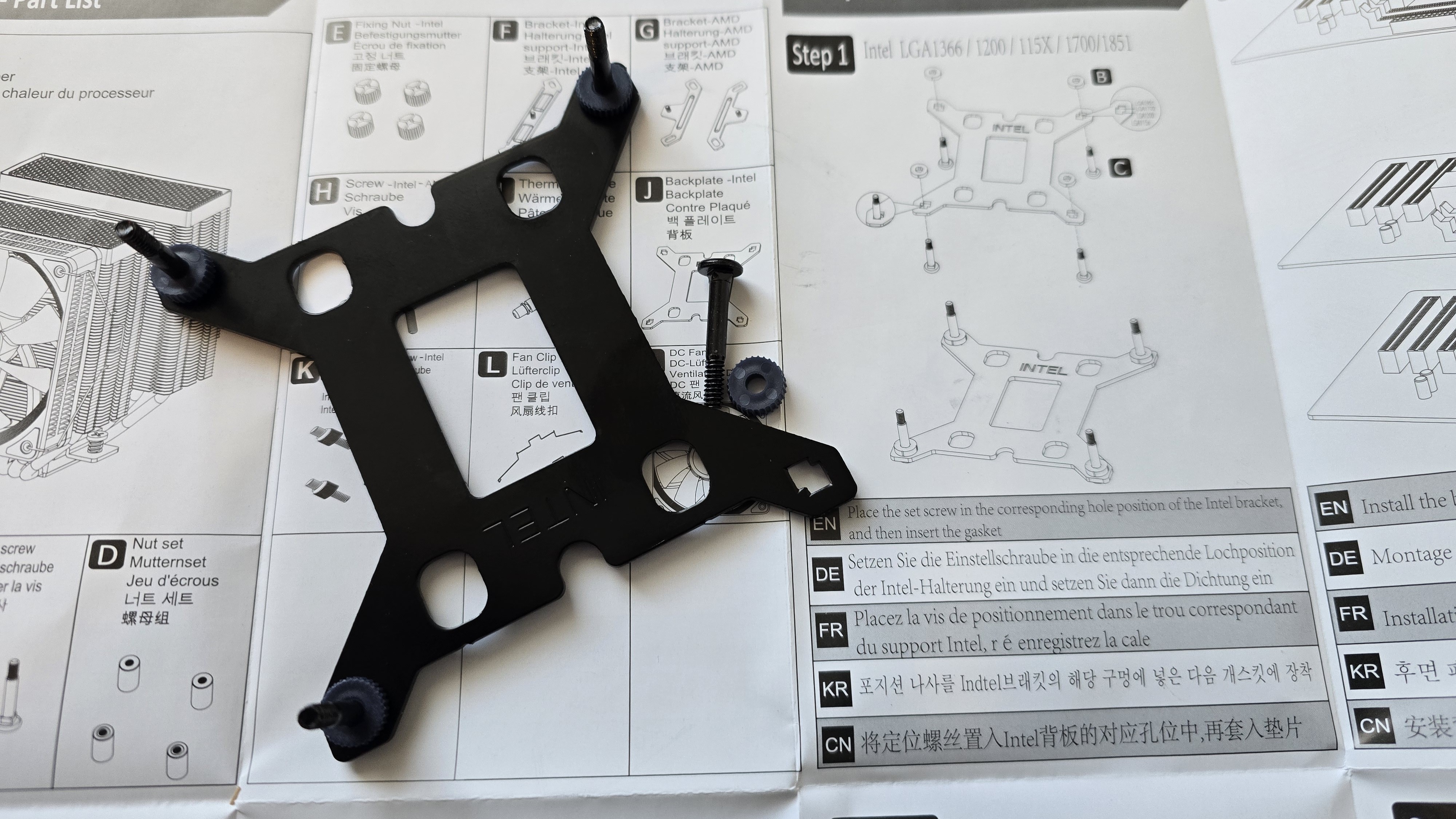
2. Next, you’ll need to take the rubber standoffs and slide them against the poles of the backplate.
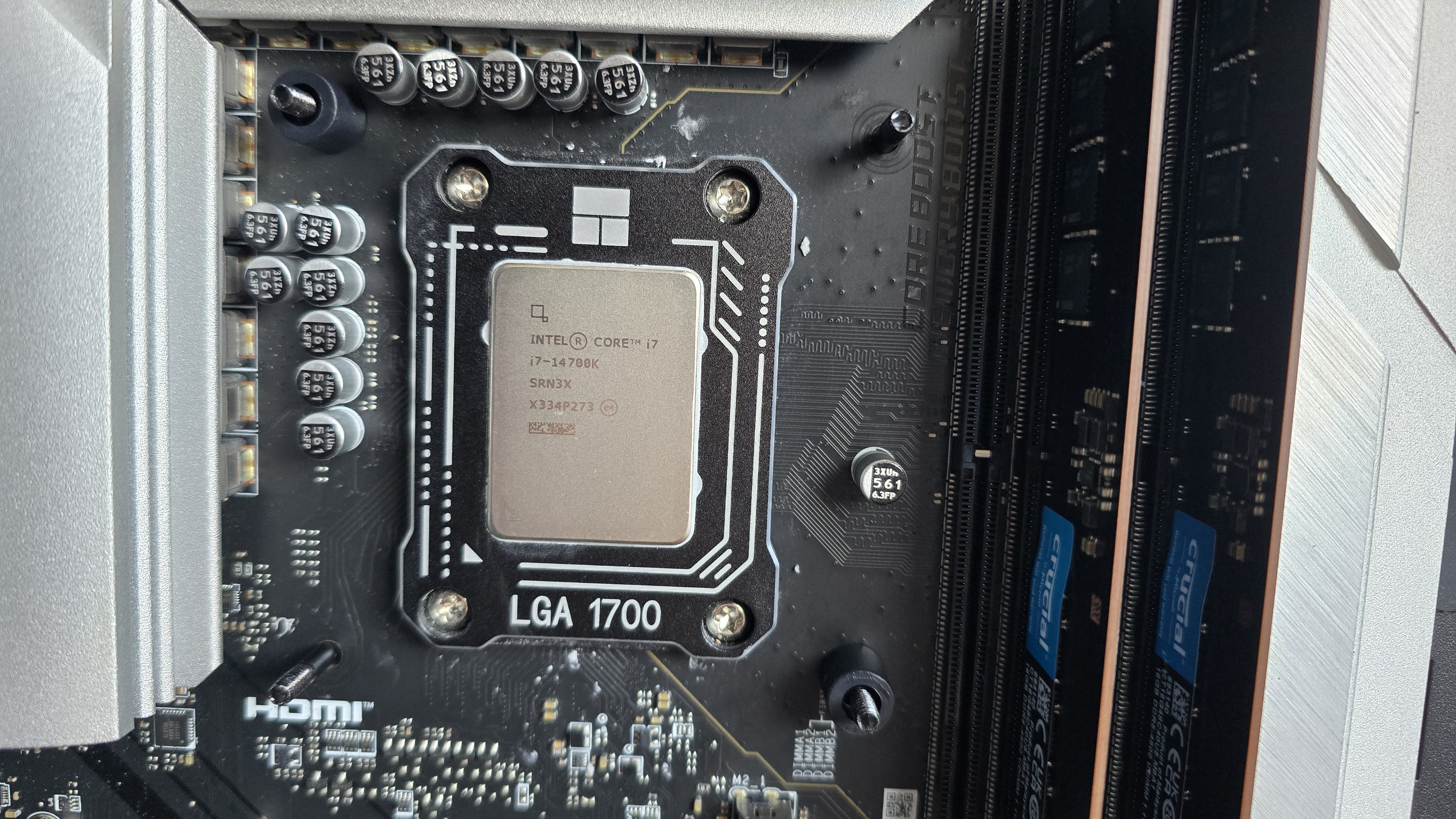
3. Then, you’ll take the mounting bars and place them on top of the rubber standoffs, securing them with the included screws.
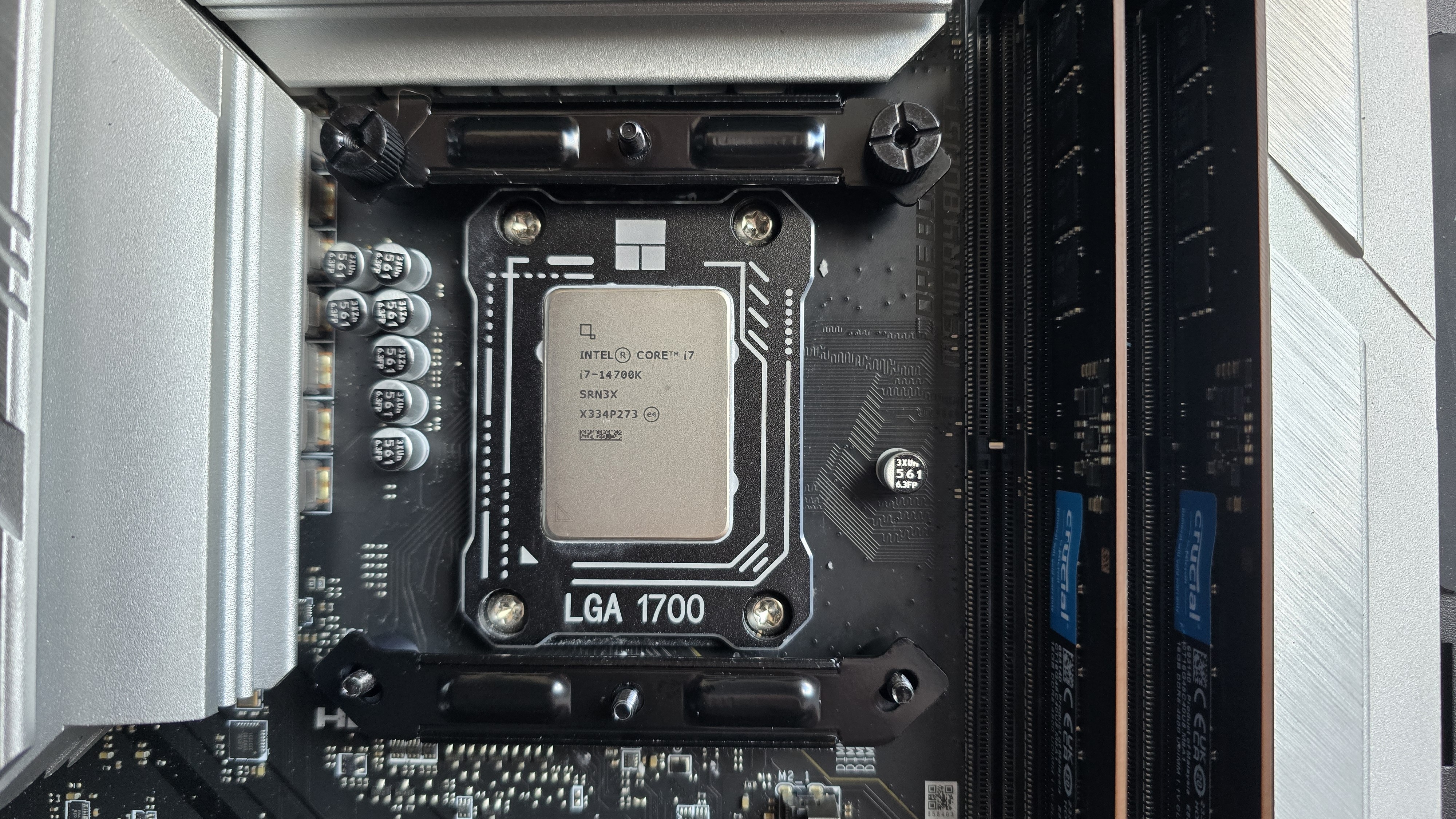
4. Apply the included thermal paste to your CPU. If you have any questions on how to do this properly, please refer to our handy how to apply thermal paste guide.
5. Remove the middle fan from the cooler, then place the cooler on top of your CPU. Use a screwdriver to secure it using the screws in between the two towers, shown below.
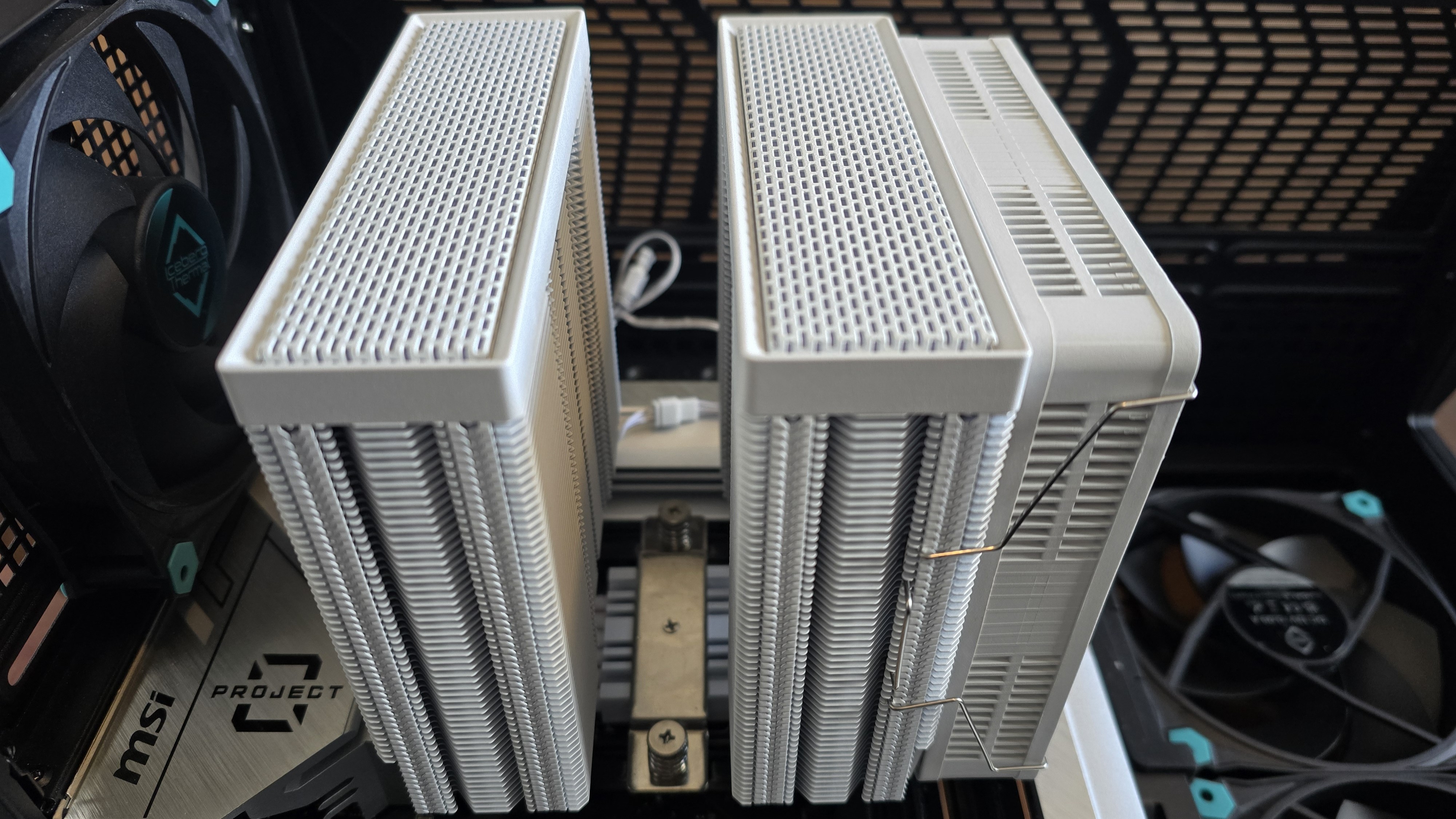
6. Once complete, connect the PWM and ARGB cables to the corresponding motherboard headers. Installation is now complete.
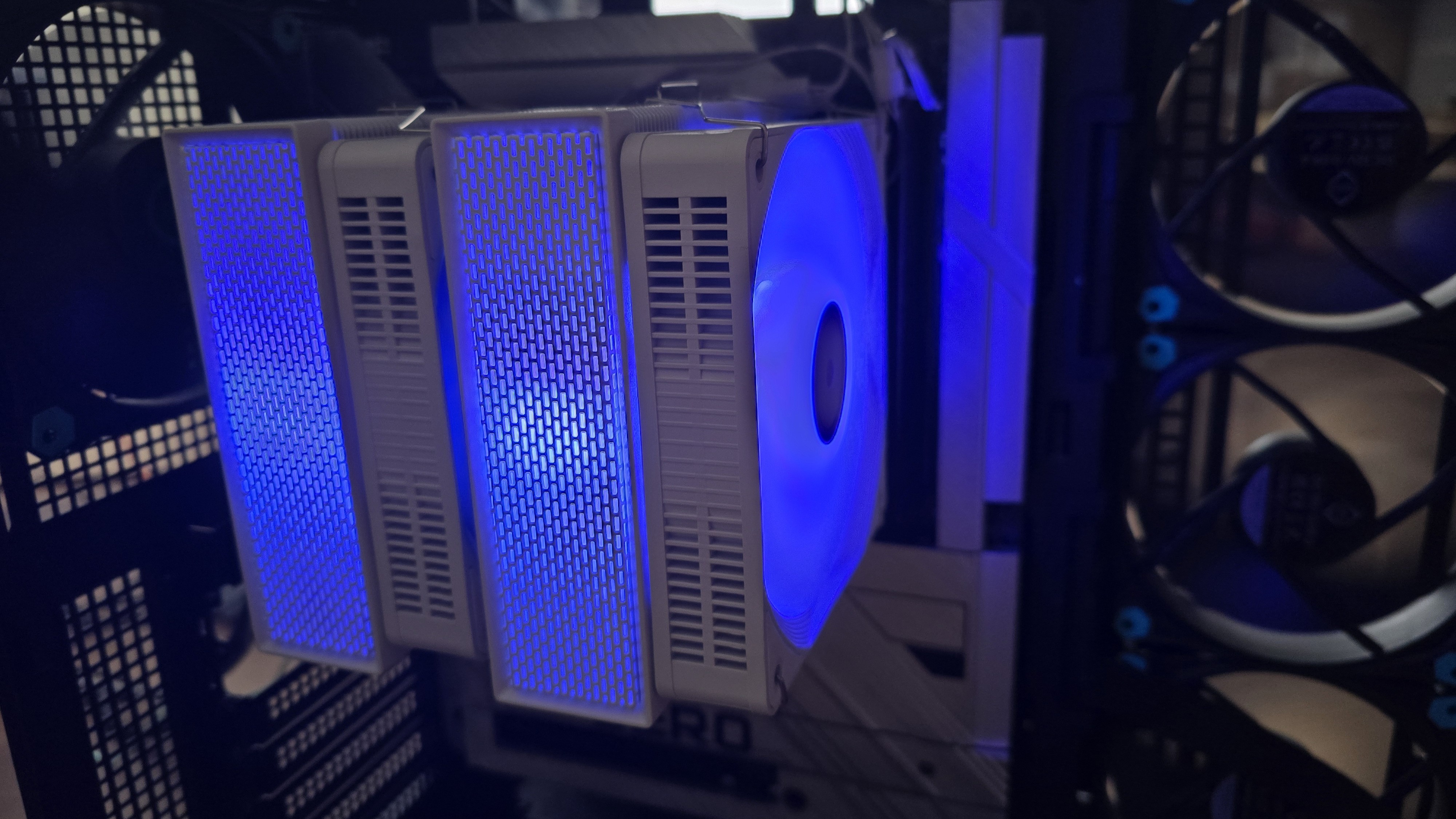

Albert Thomas is a contributor for Tom’s Hardware, primarily covering CPU cooling reviews.
-
bit_user Thanks for the review, Albert!Reply
I'm always intrigued by how much variation there is in the performance between coolers that even share the same overall design. I know there are lots of variables to optimize and manufacturing precision can also play a big role, but I do wonder just what are certain coolers doing differently or better that's really making the difference.
Also, in the interest of transparency, I wish it would be clearly stated whether this was a provided review sample or purchased on the open market. The distinction is important, because there's a greater likelihood that provided review samples are cherry-picked top-binned units and possibly even non-representative of what most people would experience. -
obvious oscar Reply
It's always good practice to let users know where, how and for how much the itens were sourced. Realistically don't think there's much binning involved with Air Cookers, is this was a CPU or GPU yeah binning could be massive, but a cooler ? I'd be more concerned about a review being too glowing because - Yey free stuff.bit_user said:Thanks for the review, Albert!
I'm always intrigued by how much variation there is in the performance between coolers that even share the same overall design. I know there are lots of variables to optimize and manufacturing precision can also play a big role, but I do wonder just what are certain coolers doing differently or better that's really making the difference.
Also, in the interest of transparency, I wish it would be clearly stated whether this was a provided review sample or purchased on the open market. The distinction is important, because there's a greater likelihood that provided review samples are cherry-picked top-binned units and possibly even non-representative of what most people would experience. -
bit_user Reply
My concern is to do with all of the variables in manufacturing. It seems to me that each point of contact is a potential source of performance variation. So, that primarily covers the interface between the base and heat pipes and the interface between the heatpipes and fin stacks.obvious oscar said:Realistically don't think there's much binning involved with Air Cookers, is this was a CPU or GPU yeah binning could be massive, but a cooler ?
Secondly, the heat pipes and their fill could be another source of significant variation. I don't know exactly what goes into making the capillaries inside the heatpipes and exactly how reproducible it is, but then you also need to fill them with exactly the right amount of fluid and gas, before sealing them.
If manufacturing isn't a significant factor in performance, then I'm at a loss to explain the significant variation in performance between heatsinks from different manufacturers that look quite similar and appear to have similar parameters, to the extent that we can measure.
It'd be great if a system builder who handles dozens, hundreds, or more of these things would be able to test many units of a few different brands and give us some visibility into the distribution within each heatsink model. Otherwise, I feel like we're flying blind. -
thestryker Until the tariff situation changes it seems unlikely these will be available to NA. When I checked AliExpress there aren't any Jiushark products coming up and the hardware sellers I have bookmarked are showing +45% cost on anything coming to the US.Reply -
Albert.Thomas Reply
While I can understand your perspective, the truth is that sampling golden bins in the cooling industry really does not happen. Products sampled before launch are actually more likely to have defects because they'll be from the first production run, and many companies actually just buy their own products from Amazon and have them shipped to me when they want me to test something. While I concede that it is theoretically possible, in practice it doesn't really happen.bit_user said:Also, in the interest of transparency, I wish it would be clearly stated whether this was a provided review sample or purchased on the open market. The distinction is important, because there's a greater likelihood that provided review samples are cherry-picked top-binned units and possibly even non-representative of what most people would experience.
Just as an example of this: Right now, the management of Tom's Hardware is kinda (understandably) pissed at me because I had a moment of uncensored, unfiltered anger towards a certain manufacturer after losing all faith in them because they keep wasting my time (and therefore, money) with defective products. This manufacturer has been sending me "samples" over the last year, and at this moment the defect rate of those sampled products is 80%. -
BFG-9000 That is completely ridiculous considering how hand-selecting a well-performing sample for reviewers would be so easy, produce good numbers and more sales. It's a low marketing expense with high potential return, and all they would need to do is send out all of the better testing units to Amazon first.Reply
It is well known that most of the car manufacturers used to send hand-tuned "ringers" to all of the car magazines. Perhaps they still do, given how many EV reviews seem to gush over how they easily get more miles out of a charge than it is rated for. That's probably why reviews from places that buy their own samples such as Project Farm or even Consumer Reports have always been more valued.
While everybody loves a bargain and some of the very cheap coolers test great in reviews, it's the lower manufacturing variability that keeps premium brands such as Noctua in business. For a higher price, at least you know what you are going to get. -
bit_user Reply
I agree with the rest of your post, but I'm not sure about this part. It's well-known that the capacity of lithium batteries decreases with use and it's plausible that manufacturers specify the typical range, during the life of the batteries. This would yield a greater range at the beginning, but a lower range near the end. I'm not saying you're wrong, but that is one alternative explanation. Now, this is pretty far outside of my expertise and getting off-topic, so I'll just leave it at that.BFG-9000 said:It is well known that most of the car manufacturers used to send hand-tuned "ringers" to all of the car magazines. Perhaps they still do, given how many EV reviews seem to gush over how they easily get more miles out of a charge than it is rated for.
Again, this is very plausible to me, however what I'd love to see is someone able to back it up with data (e.g. Puget Systems). I guess anyone with the capability to test cooler variability either is too cheap/lazy to do it or has incentives not to share what they know. The funny thing is that Puget isn't too shy about sharing failure data on things like DRAM, SSDs, and even CPUs.BFG-9000 said:While everybody loves a bargain and some of the very cheap coolers test great in reviews, it's the lower manufacturing variability that keeps premium brands such as Noctua in business. For a higher price, at least you know what you are going to get.
Some of those system builders do a burn-in test, before systems ship out. By measuring CPU package power and temperature, they could account for how much variability exists both among the CPUs and coolers (although it would require additional work to know how much of the cooler variation is due to installation vs. the coolers themselves). -
bit_user Reply
Thanks for sharing this detail. I still would appreciate more transparency (i.e. which review samples are shipped directly to you vs. purchased via Amazon), but I understand you're limited in how much you can speak about.Albert.Thomas said:While I can understand your perspective, the truth is that sampling golden bins in the cooling industry really does not happen. Products sampled before launch are actually more likely to have defects because they'll be from the first production run, and many companies actually just buy their own products from Amazon and have them shipped to me when they want me to test something.
I'm not saying there definitely is cherry-picking going on, but what I'd like is to have some evidence of when it probably isn't. If I know you received a cooler, with the order fulfilled by Amazon (or another online store), then it would give me more confidence in this regard.
Again, I'm glad to have your reviews. I hope you can reach an agreement with the editors about the level of detail and the best way to share information about products exhibiting quality issues. -
Energy96 AIO liquid coolers are so easy to install and relatively inexpensive now it’s hard to justify air cooling anymore in any DIY PC.Reply -
thestryker Reply
It's extremely hard to cherry pick the heatsink itself which is the most important part of an air cooler. While there certainly is more variance for fans it'd be pretty arduous to cherry pick those unless the company was using multisourced or changing fans and not disclosing. This is probably why nobody is particularly concerned with it when it comes to reviews.bit_user said:I'm not saying there definitely is cherry-picking going on, but what I'd like is to have some evidence of when it probably isn't.
The QC aspect is never going to show up in a review unless the company is regularly shipping bad products. If a company has a history of inconsistency I'd say that's something to certainly note in a review.
